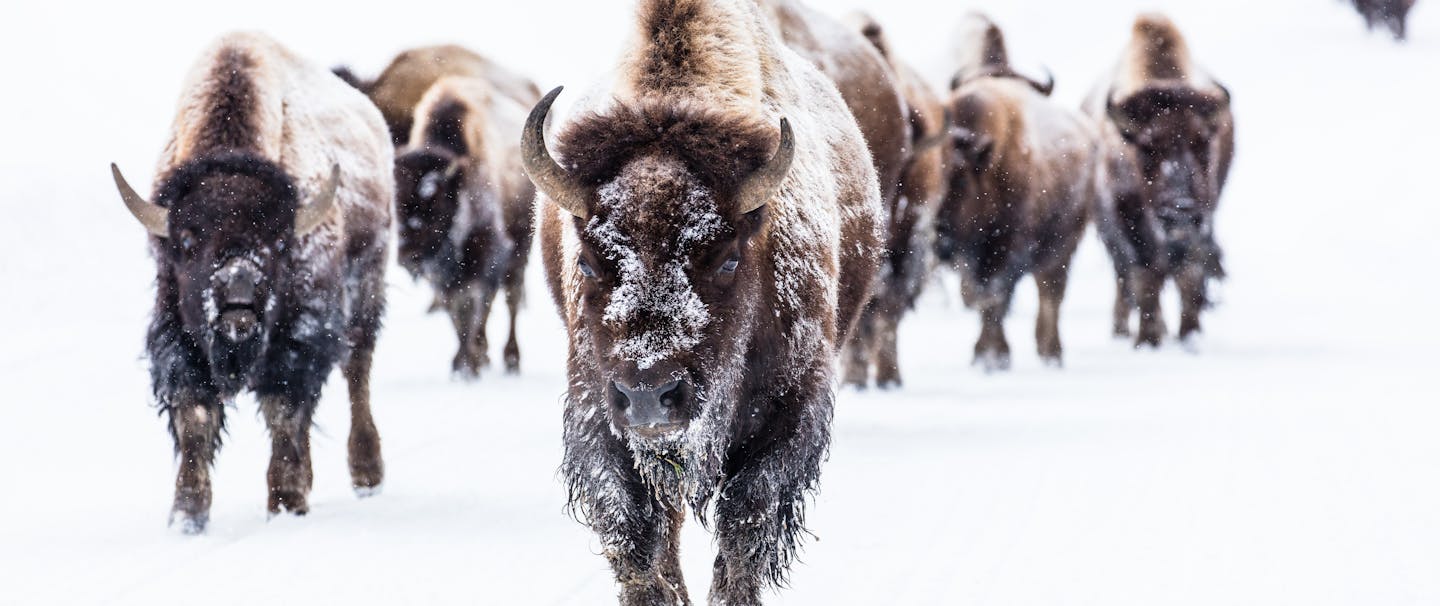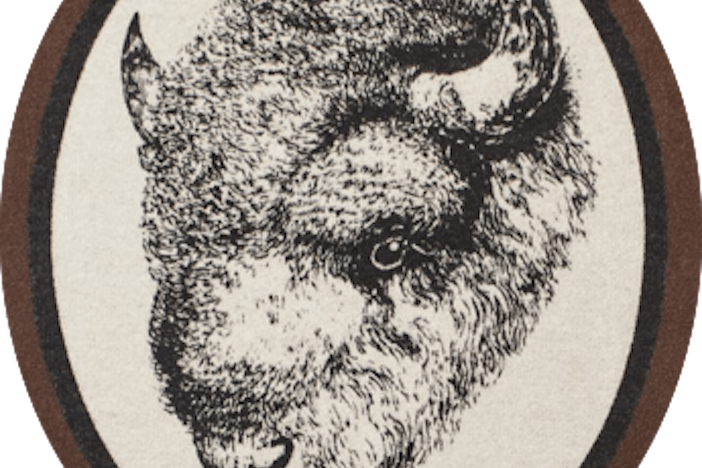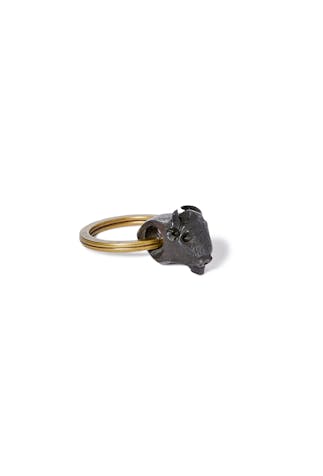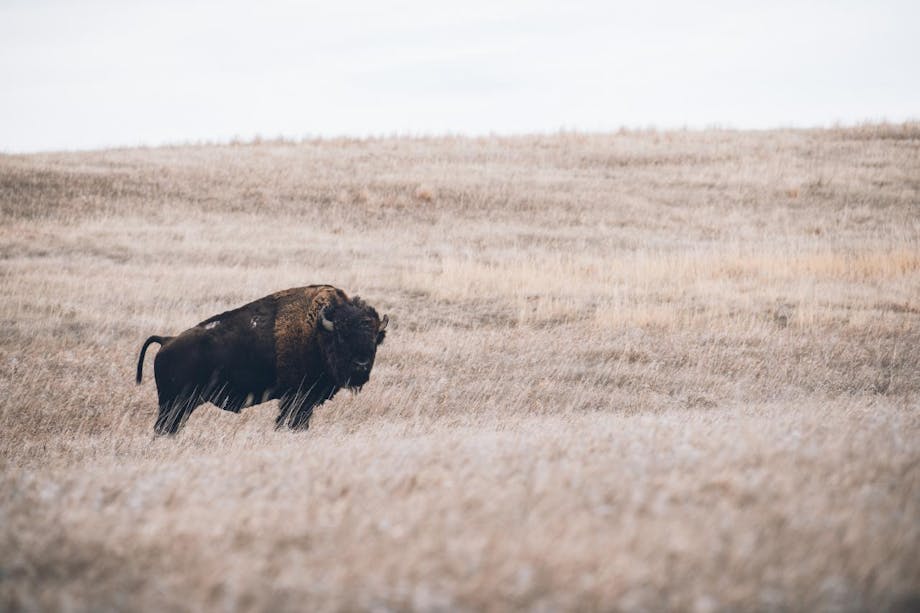The U.S. Fish and Wildlife Service estimated that around the time Columbus reached the new world, there were as many as 65 million bison on the North American continent. That number, as we know, couldn’t stand up against humans. By the late 1800s there were a relatively handful, several hundred or so, left on the continent, and fewer than two dozen in the wild. And those were in Yellowstone National Park.
In Re-Bisoning The West, Restoring An American Icon to the Landscape, Kurt Repanshek sums up this past history and examines the course forward to returning more of these iconic animals, which were designated in 2016 as the national mammal of the United States, to public lands in the West.
In the course of his research, Repanshek visited the American Prairie Reserve in north-central Montana, where a nonprofit organization is striving to put 10,000 bison on a 3.5-million-acre quilt of private, state, tribal, and federal lands. What follows is an excerpt from Re-Bisoning The West.
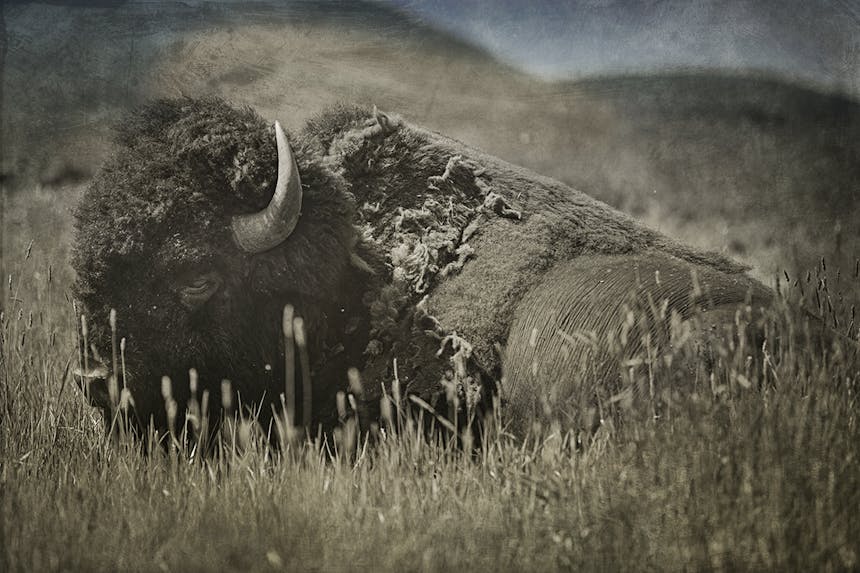
Fall is here, winter not far behind. I know this because of the flurry of white coming down as I drive north through the slippery twists and turns of Gallatin Canyon that is Yellowstone National Park’s western border and then head east over Bozeman Pass on Interstate 90. American Prairie Reserve is still roughly five hours away, depending on the condition of the dirt and gravel roads that my map shows await me, but the scenery I’m driving through is a preview of where I’m heading. The golden-yellow stubble of grasses slipping past me on the right rises above a skiff of snow, swaying in the wind. Low-slung clouds clutch both the Bridger Range and Crazy Mountains on my left as well as the Absaroka Range farther off to my right.
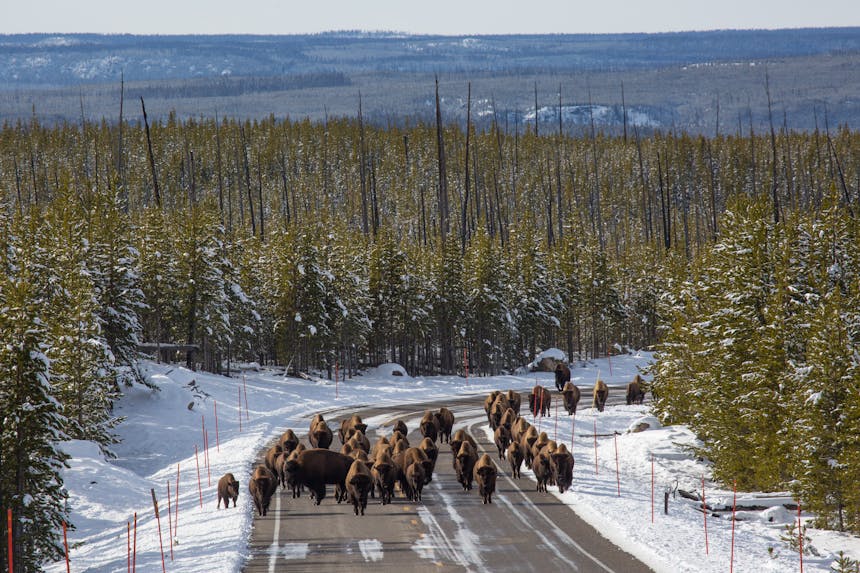
There is precious little open range left in the nation, which makes American Prairie unique. A vision of conservation launched in 2001 with help from the World Wildlife Fund, the initiative strives to create the largest nature reserve in the United States on the northern plains of Montana. Under the preserve’s management plan, small plots of private lands, located next to public lands, are strategically acquired. Then American Prairie works to obtain the grazing rights, either outright or through leases. On the preserve’s Sun Prairie allotment, about 450 bison roam the thirty thousand acres, free to cross from private land onto state land then onto US Bureau of Land Management acreage. No opening of gates needed. If it one day threads together the 3.5 million acres its designers hope for, the reserve would cover a landmass about equal in size to the state of Connecticut. It is a grand twenty-first-century experiment in large-scale conservation, one centered on a sweep of shortgrass prairie that is one of the world’s most endangered temperate ecosystems.
Little water, loss of land to agriculture and development, and climate change threaten this place. The plan at the American Prairie Reserve is to counter the threats by establishing a rich, biodiverse mix of native plants and animals. Long range, APR’s footprint would knit together private, state, and federal lands, including the Charles M. Russell National Wildlife Refuge and the Upper Missouri Breaks National Monument. On this landscape, about 10,000 bison would be free to roam. As of 2018, the preserve had nearly four hundred thousand deeded and leased acres in hand and 800-850 bison.
I’m so far north in the shortgrass prairie of north-central Montana that French-Canadian radio stations funnel through my car’s speakers. Trees are scarce, clustered along the water holes, ranch ponds, and creeks that drain what little water the prairie manages to claim.

The next morning I meet Damien Austin. He had started out his adult life thinking he wanted to major in art in college, only to venture into biology. Before he was done at Washington State University with a bachelor’s degree in that field, he also picked up minors in ecology, chemistry, and psychology. That last area is proving helpful in his role at American Prairie, as he’s in almost daily contact with ranchers who believe cattle, not bison, are the better bovines for the landscape.
As we gather in the cool, blustery morning air outside the reserve’s Enrico Education and Science Center, I learn that, despite the lack of trees, bison can be hard to find on the rolling prairie of APR. Along with Austin and Lars Anderson, the resident bison wrangler, a small group of us are set to head out across the preserve to find two cow bison with failing radio collars, tranquilize them a bit, replace the collars with updated versions, and maybe take some biological samples.

As we bounce across the prairie, small groups of bison close to the dirt track watch us roll by, while two bands of elk stare at us from a distance. Meandering along in search of the two bison cows, Austin talks of seeing the landscape restored to its pre-nineteenth-century vigor. He prefers not to use the word “experiment” for what APR is working on. Though Austin acknowledges that it’s “definitely a big project, quite ambitious,” he adds that it’s been successful so far. That success, he continues, has come while working entirely within the system. “The things that we’re doing with bison and the idea behind acquiring the land is something that happens on a daily basis in the state of Montana,” he tells me over the low throb of the pickup. “We’re not asking to change the rules or for special exceptions. We’re operating within private property rights and with the BLM grazing system.”
The desire to pull together 3.5 million acres stems from input from scientists who say that this much land is necessary to ensure the reserve is functioning on an ecological scale and so resilient to droughts, severe winters, wildfire, and whatever the climate might toss its way. “Because the environment is really arid and not that productive, some of those events can be long-lasting, so you need a really big landscape in order to build in enough resiliency,” Austin tells me as we drive on in search of the two bison with the failing radio collars.
